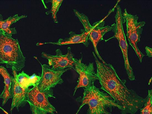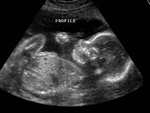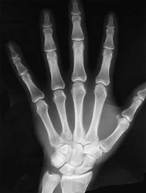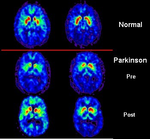IMAGING METHODS
- Previous chapter: 5.2.8 Biological effects of ionizing radiation
Medical imaging or imaging methods are the techniques and processes used to create images of the human body, organs, tissues cells etc. for clinical or research purposes. The output of these methods can provide both a structural and a functional image of the desired area. The Most important fact is that the result can be obtained non-invasively or without any need of removing parts of tissues, unlike biopsy or pathological methods. Imaging methods can be classified by many complex parameters and its limitations. For a very easy classification we can differ these methods in several groups.
Visible spectrum based imaging methods[edit | edit source]
These methods are using optical methods (lenses, mirrors, cameras etc.) to display the desired structure in visible spectrum. The wavelength of visible spectrum ranges from 390 to 750 nm. These methods are often very simple, using very common optical devices. One disadvantage of this method is the large wavelength, so it is limited by maximal resolution and magnification and also the inability to visualize inner body structures. These methods are usually used in pathology and biopsy application, using optical microscopy for study.
Ultrasound based imaging methods[edit | edit source]
These methods are using non-audible mechanical waves, of frequency 1 – 20 MHz. The waves are transmitted through body structures where they (waves) are absorbed and some are reflected. The reflected waves are next received and processed to produce an image of the desired diagnosed area.
X-ray based imaging methods[edit | edit source]
These methods are using X-rays of different energy. The X-rays are then taken up/recorded by special detectors or scintillators and processed to produce image of inner structures. As a result there could be a 2D or a 3D image. The disadvantage of these methods is the harmful effect of X-rays to tissues and organs.
Radionuclides and scintillation based methods[edit | edit source]
These methods are using / utilizing several types of radionuclides that are producing / produce gamma radiation. The radionuclides are placed into a living structure and then its activity is measured using scintillation methods. The advantage of this method is that the radionuclide is placed in a specific structure, organ or tissue and its distribution or accumulation can be next obtained in other connected structures, organs etc. As a result of these methods we get a 2D or 3D image. The disadvantage of these methods is the harmful effect of radionuclides to tissues and organs.
Links[edit | edit source]
Next chapter: 6.1 MICROSCOPY
Back to Contents




